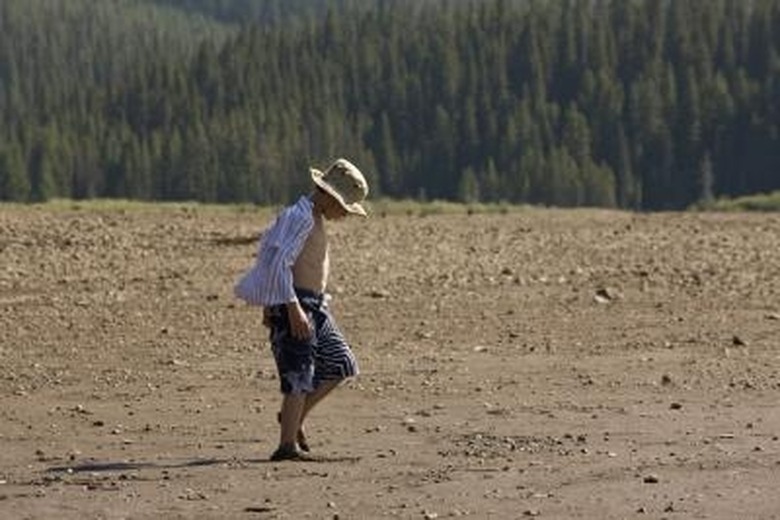The Best Agricultural Soils In The World
While soil covers about 10 percent of the earth's surface, not all the soil is optimal for agriculture and growing food. Fertile soils are highly effective at retaining water and contain high levels of nutrients. Specific soils offer different advantages to growing various plants, food and trees. Farmers often add fertilizer to improve the soil's fertility to meet agricultural needs.
Mollisol Soil
Mollisol soil in found in Europe, South America, North America and Asia, and has high quantities of organic matter that makes it fertile. This soil is high in nutrients and has large amounts of calcium, nitrate and magnesium. The soil is very dark and soft in nature. Grain and cereal crops are often grown in this highly productive soil. The processes that lead to the formation of Mollisol soil are humification, decomposition, melanization and pedoturbation.
- While soil covers about 10 percent of the earth's surface, not all the soil is optimal for agriculture and growing food.
Andisol Soil
Andisol soil exists in all types of climatic conditions around the world and is made up of volcanic-ash material. Weathering causes allophane to accumulate, which helps develop the soil. Nutrients in the soil include aluminum and iron. Often this light-colored soil is used to grow tobacco, coffee, tea and fruit.
Loam Soil
Loam soil is made up of salt, clay and sand, and is often used for agricultural and gardening purposes. The soil is effective at retaining nutrients and water, and requires less fertilizer than other soils. Because the soil is moist, air is able to circulate more freely, which helps plants grow. The soil is black in texture and is adjustable to suit various types of plants.
- Andisol soil exists in all types of climatic conditions around the world and is made up of volcanic-ash material.
- Often this light-colored soil is used to grow tobacco, coffee, tea and fruit.
Alfisol Soil
Alfisol soil is a clay subsoil that has high fertility and produces food and fiber. The soil is commonly used in both forestry and agriculture. Minerals commonly abundant in the soil include magnesium, potassium and calcium. The soil is also able to absorb water effectively during dry growing seasons.
